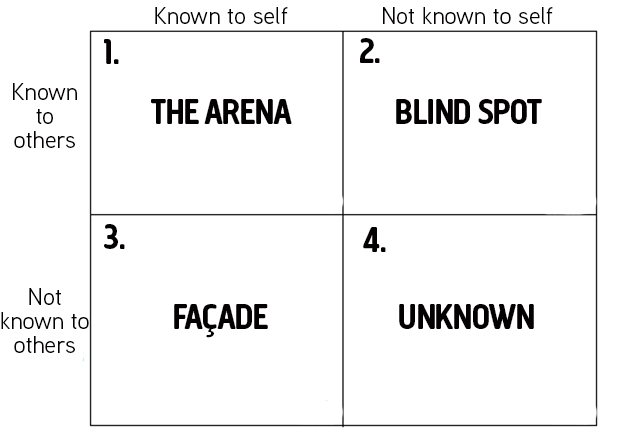Andy Trainer
14 Nov 2014
The Johari Window Model and Relationship Management
The Johari Window model, devised by American Psychologists Ingham and Luft during a research period at the University of Los Angeles in 1955, is a behavioural model which aims to boost group relations through individual self awareness and mutual (group) understanding.
The model is a combination of the first names of Joseph Luft and Hari Ingham; they’re remembered over fifty years later which shows what good workplace relationships can achieve.
The Johari Window model is particularly useful in assessing group relations with other parties. Despite being published over fifty years ago, the model is still relevant in the work place today. This is due to current popular workplace emphasis on cooperation, inter-group development, interpersonal development, soft skills, behaviour and the influence of these factors.
The ease of using the Johari Window Model to understand relationships between employees and the employer within the Psychological Contract is an invaluable benefit to businesses.
What Does The Johari Window Mean?
The model is, on the face of it, is as simple as it appears. Its application in the workplace is slightly more tricky, but we’ll get to that later.
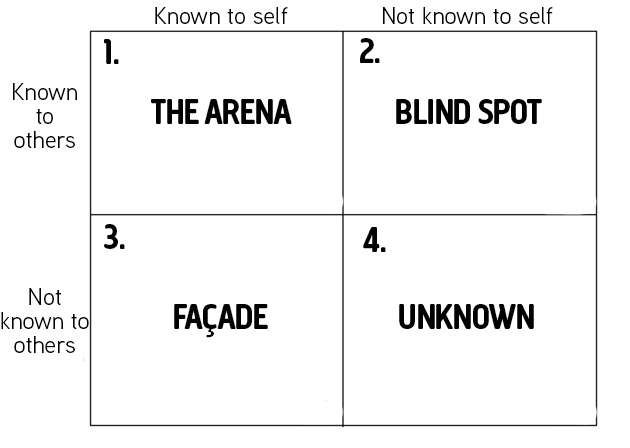
As can be seen above, the ‘Window’ is divided into four quadrants, or in this instance ‘panes':
1. The Arena (Other terms include: Open area, open self, free area or free self)
What is known by others about the person, also what the person knows about.
2. Blind spot or blind self
What others know about the person but him/her themselves does not know.
3. The ‘Façade’ (Other terms include: hidden area, avoided area, avoided self)
What is known to him/herself but unknown to others.
4. Unknown area or unknown self
That which is unknown by the person about him/her is also unknown by others.
In this instance the term 'person' applies to each individual within the group in question. The term 'others' refers to the rest of the group.
As previously mentioned, the Johari Window model can also be used to help establish the strength of inter-group relations. In this case the 'person' refers to the group in question and the 'others' refers to the other groups.
The diagram above shows four equally sized panes. However, in method the size of the panes can be altered to reflect the person’s/group’s knowledge about a certain member of a group. When groups are first created panes 1 and 2 will be understandably small in relation to 3 and 4.
As each team member becomes more well known to themselves and the rest of the group (comfort in behaviour, emotion and expressing particular views or skills) the size of the first pane will begin to increase. Ideally, as freedom of disclosure and expression within the group increases, the Arena pane will begin to surpass the other quadrants.
Application Of The Johari Window
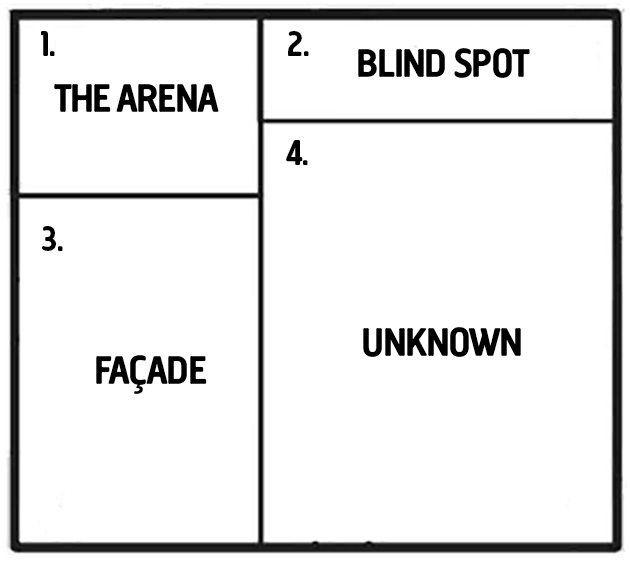
In the example above the ‘Arena’ is small due to the person’s lack of knowledge about the rest of the group and themselves. The Blind spot is also small, again due to the person’s lack of knowledge regarding the rest of the group/themselves.
The Façade is large in comparison to the arena and blind spot due to avoided issues or feelings; the individual may have trouble expressing ideas or may simply want to protect themselves. The Unknown is considerably larger than the other panes
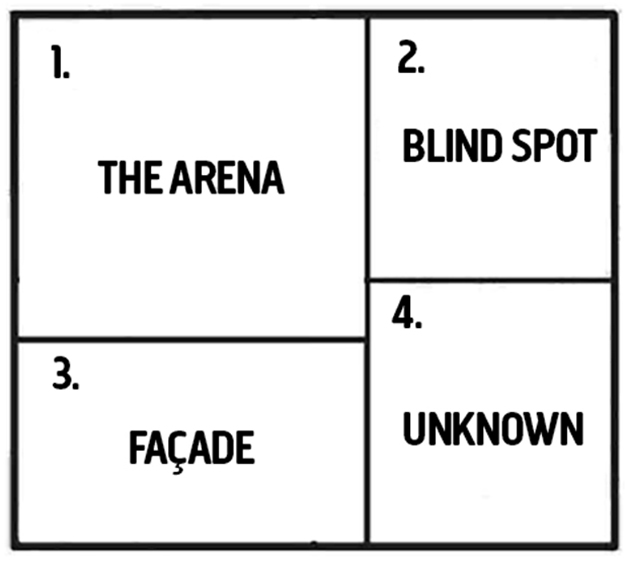
In this example the Arena is larger than the other areas, the person knows about themselves and the group shares this knowledge.
Disclosure of what is unknown by others allows the Arena to grow and the Façade and Unknown to shrink; disclosure is essential in self development. In doing so, the area for comfortable discussion increases, trust within the group builds and the communication of ideas and feelings becomes more articulate (a manager or leader capable of facilitating sensitive discussion and encouraging disclosure will accelerate this process even further).
What’s My Role as a Manager?
Your role initially as a manager is to oversee group activity and establish an environment where persons can be comfortable enough to share their opinions without fear of embarrassment or personal targeting.
It is also your role to facilitate open but sensitive discussion. Typically, top performing departments and companies engage in openness and heightened constructive communication.
Sensitivity is key; it is great to know that Daniel from Human Resources is engaged as it promotes healthy exposure. But no party benefits from knowing Michelle dipped into her overdraft last month. Some may even react negatively to the disclosure of particularly sensitive information.
Managers who feedback with their teams will directly give information about their own blind spots - everyone benefits. Healthy workplace relationships dramatically increase productivity.
Management Skills are essential in the direction of employees. Feel like you're struggling to lead efficiently or want to improve on existing techniques? We offer Management Skills Training, taught by experienced, professional trainers.
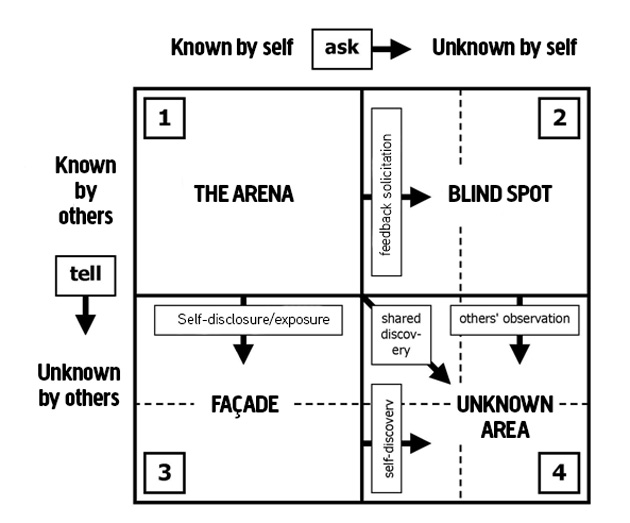
The diagram above shows the processes that cause the Unknown area to shrink.
Healthy workplace relationships develop at points of optimum exposure and feedback. Relationships are a two way deal. Both persons need to engage in active exposure and feedback in order to build these bonds.
A survey conducted by Robertson Cooper, detailed in 'What is Presenteeism?' notes the power of healthy workplace relationships. The overwhelming response from the 40,000 surveys Cooper drew from is that psychological wellbeing- boosted by healthy work relationships, will lead to a reduction in employee sick days, look attractive to new recruits and give employees a sense of purpose at the company. Motivated, low stress environments hugely improve productivity.
